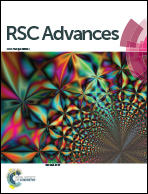Hydrothermal synthesis of the novel rutile-mixed anatase TiO2 nanosheets with dominant {001} facets for high photocatalytic activity
Abstract
In this paper, we introduce a process to synthesize a novel photocatalyst called rutile-mixed anatase nanosheets with dominant {001} facets from a hydrothermal route by using a solution mixed with Ti(OC4H9)4, HF, NH4F and H2O. The crystal structure, micrographs, chemical compositions, and photocatalytic property are characterized and evaluated by using an X-ray diffractometer (XRD), high-resolution transmission electron microscope (HRTEM), X-ray photoelectron spectroscopy (XPS), UV-vis spectrophotometer, and fluorescence spectrophotometer. The experimental results reveal that (1) the addition of NH4F played a crucial role, because it not only changes the chemical environment but also make the phase transformation from anatase to rutile. (2) Compared with the regular anatase TiO2 nanosheets with dominant {001} facets, the present novel photocatalyst exhibits a greatly enhanced photocatalyst activity, i.e., its highest level of photocatalytic activity was about four times higher than that of commercial P25 and the regular anatase TiO2 nanosheets with dominant {001} facets. The mechanism is because the formation of the rutile/anatase heterostructure enhances the separation of the photo-generated electrons and holes. It is expected that this novel photocatalyst will provide wide applications in areas of solar cells, hydrogen generation, photocatalytic environmental pollution treatment, etc.


 Please wait while we load your content...
Please wait while we load your content...